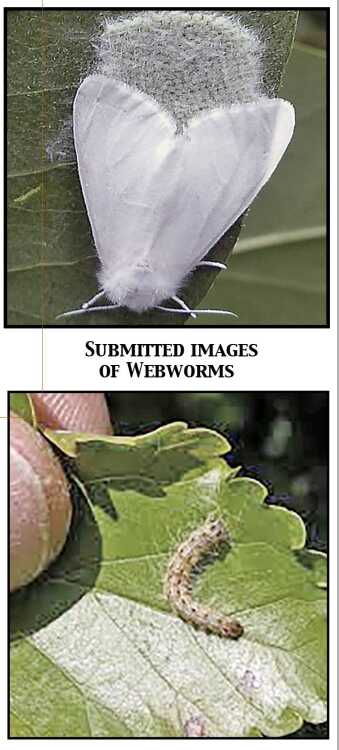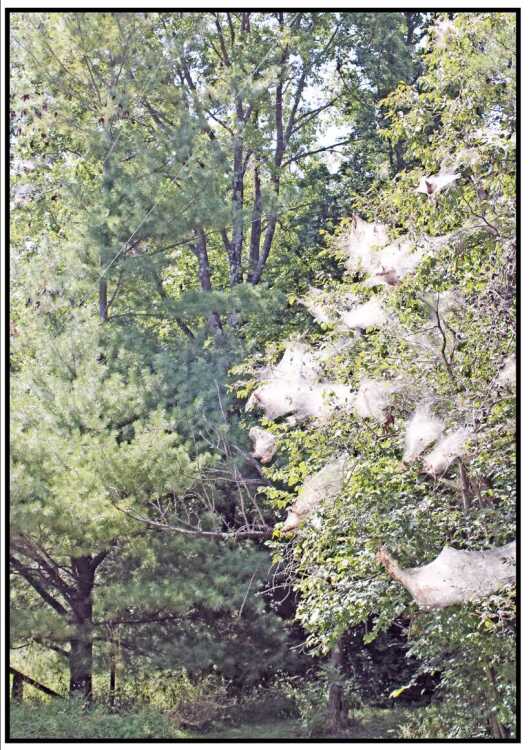SENIOR SELECTIONS September 17, 2021: The rise and fall of Indiana Webworms

If you drive around Clay County, you probably noticed those odd, spider-web-like bags hanging in trees.
If you are wondering what kind of spider created them, you might be surprised to find out spiders are not involved at all.
According to the Purdue Extension Office, those messy webs contain a colony of webworm caterpillars. Fall webworms are small, fuzzy pale-yellow caterpillars that build large, conspicuous white webs in trees in the late summer. The webs stretch over tree branches and grow over the course of the summer.

Two races of fall webworms, the red-headed and the black-headed are present in Indiana.
As early as May and into July, white adult moths of both races may emerge from cocoons in the soil and leaf litter to lay eggs on the tips of branches.
If you approach them, you might not like the response.

When disturbed, the caterpillars in the colony violently thrash back and forth in a bid to ward off predators.
These caterpillars hatch in mid-July but tend to become more noticeable as the summer progresses.
What kind of damage do they cause?
Fall webworms often eat branches bare of leaves late in the summer shortly before the trees normally drop their leaves for fall.
Are they a threat?
Very rarely do the webworms cause serious damage to trees.
In most cases the trees will grow their leaves back the following spring.
However, on rare occasions, a tree that is already highly stressed may be further weakened by fall webworm damage. However, most trees, even heavily infested trees, are minimally affected and show no signs of damage the following spring.
Fall webworm damage generally looks much worse than it is. In general, trees only need to be managed for fall webworms if the owner is concerned about aesthetics. The easiest means of management is pulling the web off the tree by hand and putting it in a bucket of soapy water or freezing it. Some people may be sensitive to the caterpillars’ hairs so gloves should be worn to prevent contact.
In cases where the webs are too high up to be reached, they can be managed through insecticides.
Favorite meal for a webworm?
Fall webworms have a wide variety of trees for potential food.
Over 90 species of deciduous trees make the menu with fruit and nut trees, like walnuts and elms, and some maples as regular targets. It is unusual to see fall webworms in the same tree year after year and especially on the same branch.
Trees of choice include:
Alder,
Willow,
Cottonwood,
Apple,
Pear,
Peach,
Pecan,
Walnut,
Elm, and
Maples are most susceptible to fall webworms.
HOWEVER, they are known to make their nests in more than 90 different species.
NOTE: Don’t be fooled by their name. Fall webworms often start spinning webs and eating foliage in June.
